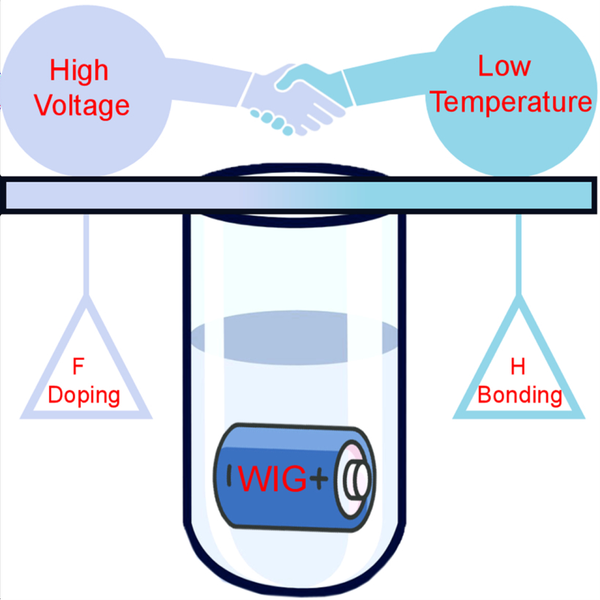Researchers from the Shanghai Institute of Ceramics of the Chinese Academy of Sciences have proposed a new "water-in-ionogel" aqueous polymer electrolyte. The electrolyte has high operating cell voltage, high water content and low salt concentration for operation at low temperatures.

Electric vehicles and flexible electronics are in a new era of thriving, and there is an urgent need for a safe, high-energy and sustainable battery that can withstand bumps and bends, even immersion in water, and work in sub-zero environments while maintaining electrochemical performance.
Among various energy storage technologies, aqueous rechargeable Na-ion batteries with nonflammable aqueous electrolytes have inherent advantages such as safety, non-toxicity, and low cost, which have led to great interest in energy storage systems.
Due to its salting-out at low temperature, high freezing point, and slow charge transport kinetics at the electrolyte-electrode interfacial layer, traditional "water-in-salt" electrolytes have high concentrations of fluoride salts and molecularly crowded aqueous electrolytes, which Confinement in a crowded polyethylene glycol (PEG) network with poor low temperature performance.
In this study, water in copolymerized PEG-derivatized poly(ethylene glycol) methyl ether methacrylate (PEGMA) and bisphenol A ethoxylated dimethacrylate (BEMA) formed cross-linked gels , thereby generating an antifreeze solid electrolyte by changing hydrogen bonds.
In addition, a typical electrolyte additive, fluoroethylene carbonate, was introduced into the PEGMA-BEMA system to form OH...F bonds, weaken the H-bond network in aqueous solution, thereby lowering the freezing point, and build a solid-electrolyte interface for low temperature ion diffusion.
A polymer-aqueous sodium-ion full battery consisting of a manganese-based cathode and a hard carbon anode can deliver high energy density, the researchers said.
What's more, this eco-friendly water-based polymer battery can be freely sealed, making it an ultra-thin, lightweight battery that performs well under harsh conditions such as bending, cutting, immersion in water, or fire.
This is the first attempt to achieve high-pressure aqueous electrolytes that can operate at low temperatures. In the future, researchers will work to improve the voltage window and transport properties of water in ionogel electrolytes for low-cost, sustainable energy storage, even at sub-zero temperatures or in water.

